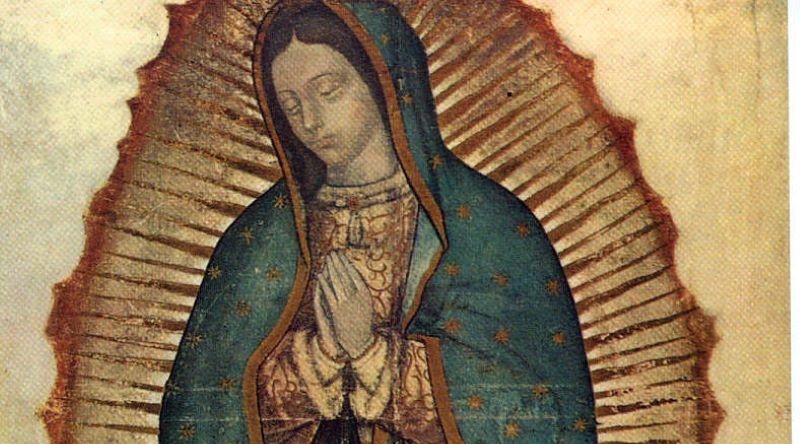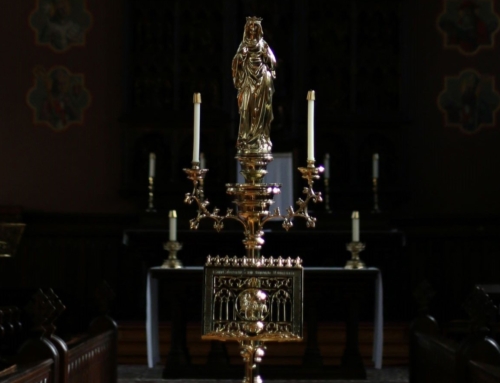Inescapable casualness. Perhaps I could even say carelessness. It’s a mark of our time. If you’ve graduated college in the last ten years, or even visited a college in the last ten years, you know what I mean. Furry flip flops. Cabin socks. Perhaps even a Comfy—for all the world to see. But for those blessed few unaware of these signs of the times, what I’m trying to say is: today, comfort is king.
On the surface, this doesn’t seem problematic. Take sweatpants. As the name suggests, they’re great for exercising. They double as sleepwear. Could they triple as everyday attire? If all pants work equally well, why not opt for less hassle and more comfort? Why fuss about the details when we’ve got the essentials?
On this feast day, the Church presents us with an answer to these questions in the tilma of Saint Juan Diego, still hanging in Guadalupe. Our Lady’s every detail is deliberate, from her resemblance to her Aztec children, to her allusion to Revelation 12, to the tiny images in her soft brown eyes. The depiction is simple, yet well-proportioned and beautiful.
The image of Our Lady of Guadalupe shows us our mother’s personality. It shows us that Mary is sensitive. Not in the way we use “sensitive”—being easily upset, frequently needing to be comforted, perhaps even frequently needing a Comfy. She isn’t like that at all. I mean that she senses—she feels everything much more acutely than we do. At Guadalupe, she naturally focused on the essential point of her mission: “I will give Him to the people in all my personal love.” Would this alone have been enough? Perhaps. But Mary didn’t choose to give just “enough.” In her focus on the essential, she didn’t neglect the details. Her children needed inspiration, so her splendor elevates, her prophecies ignite, her requests motivate. Yet they needed consolation as well; and so her serenity calms, her affection warms, her gentleness comforts. When she came to Saint Juan Diego, she took care to appear with both beauty and familiarity, modesty and intimacy, sternness and sweetness, all attributes sensitively chosen to help him receive her message of love. And when she visits us, she takes care to do the same.
Whether homemakers or business owners, laypersons or friars, poor or rich, we can imitate our mother in her sensitivity. Yes, the essentials deserve our primary focus, but the details are not superfluous. The tastefulness of our clothing, the order of our homes, the beauty of our churches all lie in the details; there we will find either the world’s haphazard casualness or our mother’s orderly beauty. Details affect dispositions: they raise the mind to heaven or keep it down on earth.
Mary shall be our muse and our Lady if we desire to embody St. Paul’s exhortation: “Whatever is true, whatever is honorable, whatever is just, whatever is pure, whatever is lovely, whatever is gracious, if there is any excellence and if there is anything worthy of praise, think about these things” (Phil 4:8). She will be our inspiration and the one we seek to please. By imitating her contemplative sensitivity and by living for her delight, we will glorify God through lives that are beautiful, down to every detail.
Today, make our mother smile by doing something beautiful. It need not be extravagant or expensive, only sensitive and intelligent. Thrift often aids beauty, since it requires ingenuity. Set the table with cloth napkins and candles; sing your favorite Marian hymn to the best of your ability; wear a tasteful blue tie or dress instead of a Star Wars Comfy. Some say “the devil’s in the details.” But if the details are beautiful, I think you’ll find Our Lady there instead.
✠
Image: Mary, Virgen de Guadalupe







